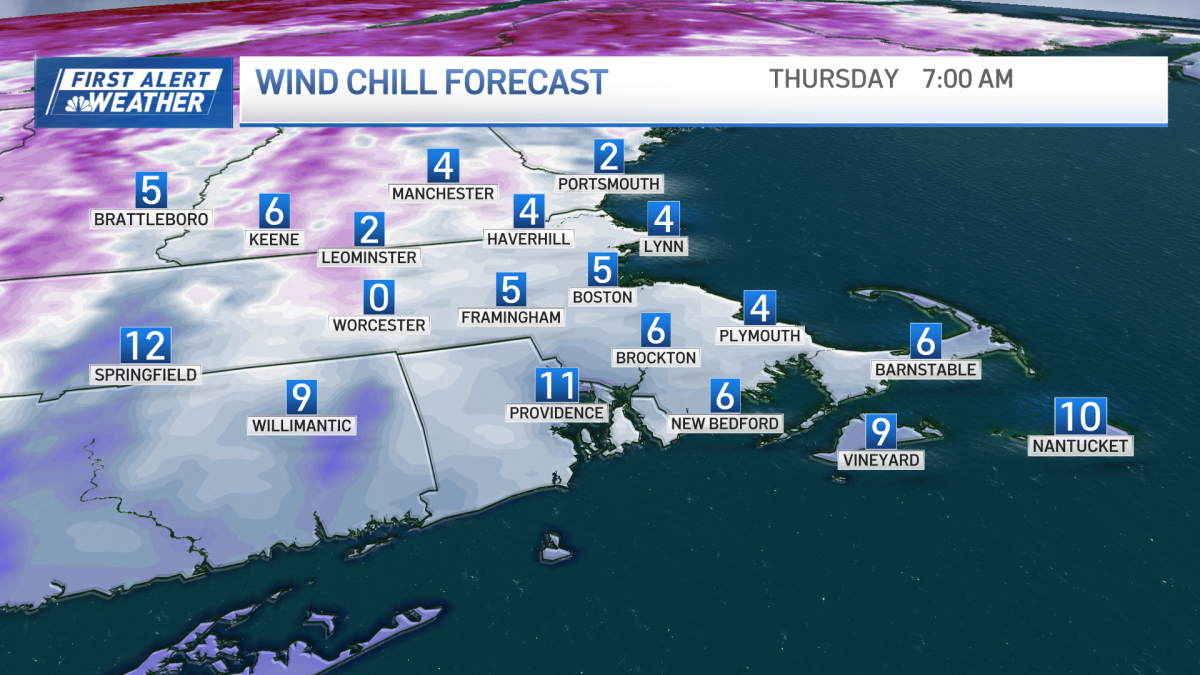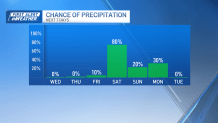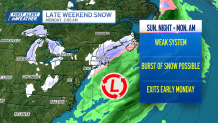Boston, MA
Karen Read denies killing Boston police officer as prosecution refutes cover-up allegations

Outside a courthouse last month in Norfolk County, Massachusetts, supporters swarmed around Karen Read, a woman charged with killing her boyfriend, Boston Police Officer John O’Keefe, in January 2022.
Prosecutors allege Read hit O’Keefe with her car and left him to die in the middle of a snowstorm after the two got into an argument earlier in the day.
Read has strenuously denied the allegations, saying in an interview with ABC News’ Matt Gutman, “I did not kill John O’Keefe. I have never harmed a hair on John O’Keefe’s head.”
Now, Read’s defense is making national headlines after her lawyers alleged in court documents that a fellow police officer was involved in O’Keefe’s death and colluded with others in a coverup. After posting bail, Read has spent much of the past 18 months in and out of court.
In a statement to ABC News, the prosecution says, “There was no conspiracy or coverup. Such claims have been systematically refuted by evidence submitted to Norfolk Superior Court.”
Karen Read appears in Norfolk County Superior Court in Dedham, Mass.,a for a pre-trial hearing. She is charged with the murder of her boyfriend, John O’Keefe, May 3, 2023.
John Tlumacki/The Boston Globe via Getty Images
The couple first dated in their 20s and reconnected on Facebook more than a decade later. Read says she admired that O’Keefe was taking care of his sister and brother-in-law’s children after their parents passed away seven years prior.
Read says she soon became part of the O’Keefe family, but their relationship also had its struggles. Read says O’Keefe was relying more on her to take care of the kids, and that he criticized some of the decisions she made with them.
Read claims the couple had an argument on New Year’s Eve when they were away on vacation. O’Keefe became “incoherently drunk” and didn’t come back to their room until after 3 a.m., according to Read, leaving her to ring in the new year with O’Keefe’s niece and nephew.
“I felt very much taken advantage of. He apologized profusely for what happened on New Year’s Eve. And he said, ‘If you can’t get over it, then you need to spend some time at your house. I can’t keep apologizing. I don’t wanna keep rehashing this,’” Read said.
A few weeks later, the couple was invited to meet up with some friends at the Waterfall Bar in Canton, where they ran into Brian Albert, a fellow Boston police officer who Read says O’Keefe looked up to.

Karen Read and John O’Keefe are shown in an undated photo.
Courtesy of Karen Read
At the bar, according to Read, O’Keefe told her they were invited to continue hanging out at Albert’s home.
“I said, ‘Can we make sure we’re welcome here? Nobody extended the invite to me. I didn’t hear the invite extended to you,’” Read said.
The couple then drove to Albert’s home. What happened next is disputed.
“So I pull at the foot of the driveway. It’s snowing. John has no coat on. It’s windy. So I drop him off. He goes up the driveway and approaches the side door. And as I see him approach the door, I look down at my phone,” Read said.
Read says after about 10 minutes of waiting in her car, she became irritated that O’Keefe still hadn’t gotten in touch with her. She says she then drove back to O’Keefe’s home, where she continued calling him before falling asleep at around 1:30 a.m.
Read says that when she woke up before 5 a.m., O’Keefe still wasn’t home, so she started canvassing the neighborhood. She enlisted help from O’Keefe’s friend Kerry Roberts and Jennifer McCabe, the sister-in-law of Brian Albert, who was also at Albert’s house the night before.
The three women headed to Albert’s home. After pulling in, Read says she saw O’Keefe’s body “immediately.” O’Keefe was pronounced dead at the hospital. He died from blunt force trauma and hypothermia, according to the chief medical examiner.
It wasn’t long before Read became the prime suspect in O’Keefe’s death. Authorities say they noticed a cracked taillight after seizing Read’s SUV.
“I had told both Jen and Kerry that I cracked my taillight. And I said, ‘I just hit my car on top of everything,’ but I didn’t look at the damage. And both women said, ‘It’s cracked. It’s cracked. Calm down, you cracked your taillight. You’re OK, let’s go look for John,’” Read said.
But according to police statements, McCabe told authorities that as they searched for O’Keefe, Read stated, “Could I have hit him…Did I hit him?”
When O’Keefe’s body was discovered, first responders who arrived on scene claim to have overheard Read saying “I hit him. I hit him.”
Read disputes that, telling ABC News, “I said, ‘I hit him?’ It was preceded by a, ‘Did,’ and proceeded by a question mark. What I thought could have happened was that, did I incapacitate him unwittingly, somehow, and then in his drunkenness [he] passed out?” Read said.
Asked how many drinks she had at the bar that night, Read told ABC News, “probably about four.” But prosecutors allege Read was intoxicated after having nine drinks that night.
Still, Read claims to ABC News it’s “not possible” that she may have hit O’Keefe unwittingly with her SUV.
Read has been indicted on second-degree murder charges.
Investigators reported finding “fragments of broken glass on the rear bumper” on Read’s vehicle and that a broken cocktail glass was found by what appeared to be patches of blood near O’Keefe’s body.
“The victim Mr. O’Keefe is last observed on surveillance video with a cocktail glass in his right hand. Same arm that is injured, the same type of glass that is recovered from the defendant’s car,” prosecutors said.
In court documents, the prosecution claims that Read’s blood alcohol level could have been between .13% and .29%,” which is above the legal limit of .08.
Prosecutors say that pieces of Read’s broken taillight were found on the scene the day O’Keefe’s body was found. More fragments of the taillight were found the following week, according to Canton police reports, after the snow melted to reveal more at the scene.
But Read’s attorney Alan Jackson does not believe that claim, telling ABC News the taillight pieces, “were planted after the fact.”
Asked what Read’s defense believes actually happened to O’Keefe after Read dropped him off, Jackson said, “I think he walked into the house. I think he was confronted, was likely brought down to the basement. I think that confrontation got physical, and he was beaten. He was beaten to a point of unconsciousness,” Jackson said.
Jackson argues that the autopsy photos of O’Keefe support his own theory, and not the prosecution’s claim.
“It looks like he’s been in a fistfight and he’s been beaten…He’s got some defensive wound bruises on the backs of his hand…He’s got this massive laceration on the back of his head, a big, giant gash about two and a half inches exactly lateral — going from left to right, two black eyes, a cut over his right eye, a cut over his nose,” Jackson said.
Jackson told ABC News, “This was a cover up…John was murdered inside that house. His body was placed outside.”
The prosecution said in its statement to ABC News that, according to O’Keefe’s cellphone GPS records and 11 witness statements, O’Keefe never entered Albert’s home. The medical examiner found “no signs of Mr. O’Keefe being involved in any type of physical altercation or fight.”
Attorneys for Brian Albert and Jennifer McCabe did not respond to requests for comment. In a previous statement to the Boston Herald, McCabe’s attorney said, “The whole scenario is baseless.”
Read’s next court appearance is set for September.

Boston, MA
Constantine Manos, photographer for landmark ‘Where’s Boston?’ exhibit, dies at 90 – The Boston Globe

Among Mr. Manos’s books were “A Greek Portfolio” (1972; updated 1999), “Bostonians” (1975), “American Color” 1995) and ”American Color 2″ (2010). Mr. Manos’s work with color was notably expressive and influential.
“Color was a four-letter word in art photography,” the photographer Lou Jones, who worked with Mr. Manos on “Where’s Boston?,” said in a telephone interview. “But he was making wonderful, complex photographs with color, and that meant so much.”
Yet for all his formal skill, Mr. Manos always emphasized the human element in his work. “I am a people photographer and have always been interested in people,” he once said.
That interest extended beyond the photographs he took. He was a celebrated teacher. Among the students he taught in his photo workshops was Stella Johnson.
“He’d go through a hundred of my photographs,” she said in a telephone interview, “and maybe he’d like two. ‘No, no, no, no, yes, no.’ Costa really taught me how to see. I remember him looking at one picture and saying, “You were standing in the wrong spot.’ Something like that was invaluable to me as a young photographer.
“He was a very, very kind man, very generous. But he was very strict. ‘How could you do that?’ He was adored by his students and by his friends, absolutely. We were all lucky to have been in his orbit.”

Mr. Manos, who moved to Provincetown in 2008, lived in the South End for four decades. The South Carolina native’s association with the Boston area began when the Boston Symphony Orchestra hired him as a photographer at Tanglewood. He was 19. This led to Mr. Manos’s first book, “Portrait of a Symphony” (1961; updated 2000).
Constantine Manos was born in Columbia, S.C., on Oct. 12, 1934. His parents, Dimitri and Aphrodite (Vaporiotou) Manos, were Greek immigrants. They ran a café in the city’s Black section. That experience gave Mr. Manos a sympathy for marginalized people that would stay with him throughout his life. As a student at the University of South Carolina, he wrote editorials in the school paper opposing segregation. Later, he would do extensive work chronicling the LGBTQ+ community with his camera.
Mr. Manos became interested in photography at 13, joining the school camera club and building a darkroom in his parents’ basement. After graduating from college, Mr. Manos did two years of Army service in Germany, working as a photographer for Stars and Stripes. He joined Magnum in 1963. This had special meaning for him. Mr. Manos’s chief inspiration as a young photographer had been Henri Cartier-Bresson, one of Magnum’s founders. He was such an admirer he made a point of using the same equipment that Cartier-Bresson did.
That same year, Mr. Manos entered a seafood restaurant in Rome that was around the corner from the Pantheon. Prodanou, his future husband, was dining with friends. Noticing Mr. Manos, he gestured to him. “Would you join us for coffee?” The couple spent the next 61 years together, marrying in 2011.

Mr. Manos lived in Greece for three years, which led to “A Greek Portfolio.” He undertook a very different project in the Athens of America. Part of the city’s Bicentennial tribute, “Where’s Boston?” was a slice-of-many-lives view of contemporary Boston.
Located in a red-white-and-blue striped pavilion at the Prudential Center, it became a local sensation. The installation involved 42 computerized projectors and 3,097 color slides (most of them taken by Mr. Manos), shown on eight 10 feet by 10 feet screens. Outside the pavilion was a set of murals, consisting of 152 black-and-white photographs of Boston scenes, all shot by Mr. Manos.
“The most important thing I had to do was to keep my picture ideas simple,” he said in a 1975 Globe interview. “Viewers are treated to a veritable avalanche of color slides in exactly one hour’s time.”
In that same interview, he made an observation about his work generally. “I prefer to stay in close to my subjects. I let them see me and my camera and when they become bored they forget about me and then I get my best pictures.”
Among institutions that own Mr. Manos’s photographs are the Museum of Fine Arts; the Museum of Modern Art, New York; the Art Institute of Chicago; the High Museum of Art, Atlanta; the Library of Congress; and the Bibliothèque Nationale, Paris.
In addition to his husband, Mr. Manos leaves a sister, Irene Constantinides, of Atlanta, and a brother, Theofanis Manos, of Greenville, S.C.
A memorial service will be held later this year.
Mark Feeney can be reached at mark.feeney@globe.com.
Boston, MA
Below freezing temperatures again today

The winds are still going Wednesday, but the air temperatures remain at respectable levels. Highs will manage to weasel up to 30 in most spots. It’s too bad we’re not going to feel them at face value. Instead, we’re dressing for temps in the teens all day today.
Thursday and Friday are the picks of the week.
There will be a lot less wind, reasonable winter temperatures in the 30s and a decent amount of sun. We’ll be quiet into the weekend, as our next weather system approaches.
With mild air expected to come north on southerly winds, highs will bounce back to the low and mid-40s both days of the weekend.
Showers will be delayed until late day/evening on Saturday and into the night. There may be a few early on Sunday too, but the focus on that day will be to bring in the cold.
Highs will briefly sneak into the 40s, then fall late day.

We’ll also watch a batch of snow late Sunday night as it moves up the Eastern Seaboard.
Right now, there is a potential for some accumulation as it moves overhead Sunday night and early Monday morning.
It appears to be a weak, speedy system, so we’re not expecting it to pull any punches.

Enjoy the quieter spell of weather!
Boston, MA
Boston City Councilor will introduce

BOSTON – It could cost you more to get a soda soon. The Boston City Council is proposing a tax on sugary drinks, saying the money on unhealthy beverages can be put to good use.
A benefit for public health?
“I’ve heard from a lot of residents in my district who are supportive of a tax on sugary beverages, but they want to make sure that these funds are used for public health,” said City Councilor Sharon Durkan, who is introducing the “Sugar Tax,” modeled on Philadelphia and Seattle. She said it’s a great way to introduce and fund health initiatives and slowly improve public health.
A study from Boston University found that cities that implemented a tax on sugary drinks saw a 33% decrease in sales.
“What it does is it creates an environment where we are discouraging the use of something that we know, over time, causes cancer, causes diet-related diseases, causes obesity and other diet-related illnesses,” she said.
Soda drinkers say no to “Sugar Tax”
Soda drinkers don’t see the benefit.
Delaney Doidge stopped by the store to get a mid-day pick-me-up on Tuesday.
“I wasn’t planning on getting anything, but we needed toilet paper, and I wanted a Diet Coke, so I got a Diet Coke,” she said, adding that a tax on sugary drinks is an overreach, forcing her to ask: What’s next?
“Then we’d have to tax everything else that brings people enjoyment,” Doidge said. “If somebody wants a sweet treat, they deserve it, no tax.”
Store owners said they’re worried about how an additional tax would impact their businesses.
Durkan plans to bring the tax idea before the City Council on Wednesday to start the conversation about what rates would look like.
Massachusetts considered a similar tax in 2017.
-

 Health1 week ago
Health1 week agoOzempic ‘microdosing’ is the new weight-loss trend: Should you try it?
-
/cdn.vox-cdn.com/uploads/chorus_asset/file/25822586/STK169_ZUCKERBERG_MAGA_STKS491_CVIRGINIA_A.jpg)
/cdn.vox-cdn.com/uploads/chorus_asset/file/25822586/STK169_ZUCKERBERG_MAGA_STKS491_CVIRGINIA_A.jpg) Technology6 days ago
Technology6 days agoMeta is highlighting a splintering global approach to online speech
-

 Science4 days ago
Science4 days agoMetro will offer free rides in L.A. through Sunday due to fires
-
/cdn.vox-cdn.com/uploads/chorus_asset/file/25821992/videoframe_720397.png)
/cdn.vox-cdn.com/uploads/chorus_asset/file/25821992/videoframe_720397.png) Technology1 week ago
Technology1 week agoLas Vegas police release ChatGPT logs from the suspect in the Cybertruck explosion
-

 Movie Reviews1 week ago
Movie Reviews1 week ago‘How to Make Millions Before Grandma Dies’ Review: Thai Oscar Entry Is a Disarmingly Sentimental Tear-Jerker
-

 Health1 week ago
Health1 week agoMichael J. Fox honored with Presidential Medal of Freedom for Parkinson’s research efforts
-

 Movie Reviews1 week ago
Movie Reviews1 week agoMovie Review: Millennials try to buy-in or opt-out of the “American Meltdown”
-

 News1 week ago
News1 week agoPhotos: Pacific Palisades Wildfire Engulfs Homes in an L.A. Neighborhood















